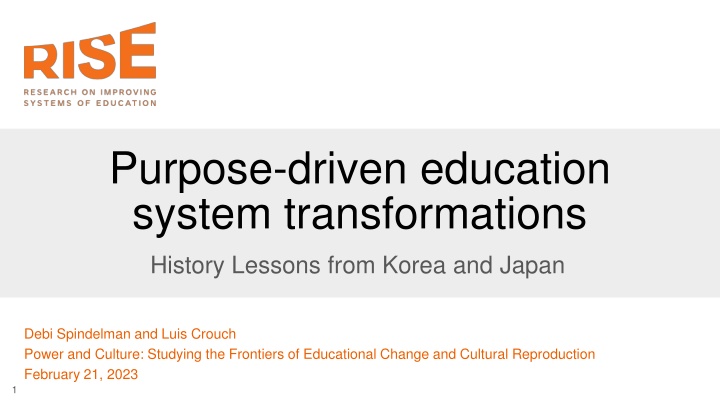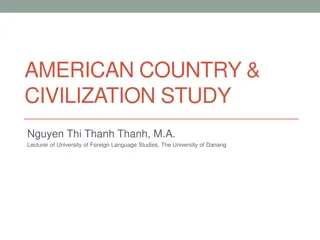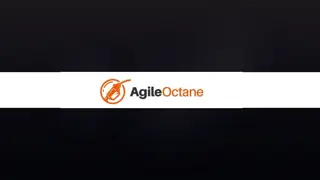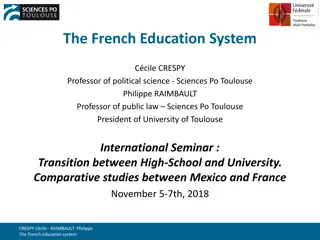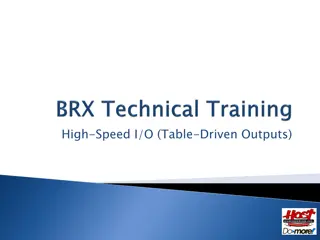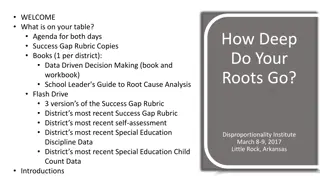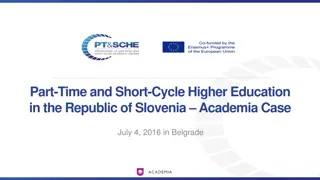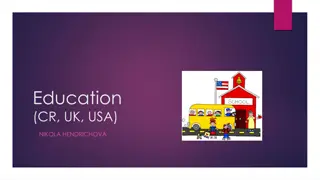Purpose-driven education system tranformations
"This study examines the power and culture in educational change and cultural reproduction, focusing on the experiences of Korea and Japan. Insights are drawn from the history of these countries to inform purpose-driven education system transformations. Authors Debi Spindelman and Luis Crouch provide valuable perspectives on studying educational frontiers, offering a unique approach to understanding impactful changes in academic systems."
Download Presentation

Please find below an Image/Link to download the presentation.
The content on the website is provided AS IS for your information and personal use only. It may not be sold, licensed, or shared on other websites without obtaining consent from the author.If you encounter any issues during the download, it is possible that the publisher has removed the file from their server.
You are allowed to download the files provided on this website for personal or commercial use, subject to the condition that they are used lawfully. All files are the property of their respective owners.
The content on the website is provided AS IS for your information and personal use only. It may not be sold, licensed, or shared on other websites without obtaining consent from the author.
E N D
Presentation Transcript
Purpose-driven education system transformations History Lessons from Korea and Japan Debi Spindelman and Luis Crouch Power and Culture: Studying the Frontiers of Educational Change and Cultural Reproduction February 21, 2023 1
Motivation for research Original: Field observation: KOICA and JICA education programs seemed mis-matched Relative to what Korea and Japan did when they developed, and how well it worked Relative to what developing countries need today Later, field and desk observation: same mis-match seems to operate in global elites (WB, GPE) Test hypotheses that: Japan and Korea did very interesting and specific things These are pretty different from the standard donor playbook There are useful things to learn from their history, for countries and development agencies Some of them might be borrowable, with great care (or might provide caution as to playbook) 2
Why Japan (1880-1930) and Korea (1945-1985)? Non-western educational catch-up transformation success stories: RAPID: From relatively low % of literacy to high in ~40 years QUALITY: Consistently top of international league tables EQUAL: Tremendous within-country equality (in both achievement on international assessments and years of education) Intentional and purposive vs. evolutionary Explicitly borrowing, considering, explicitly rejecting Influence of Confucianism? 3
Some data as motivation: Why Japan and Korea? +2 SDs above developing countries 0.7 SD above other developed countries Half the inequality of developing countries TIMSS 2015 Gr 4 Maths Inequality Measure .37 .91 .75 Average 600 376 376 Japan & Korea South Africa Indonesia Netherlands & Finland 530 .41 4
Purpose: response to external threats Japan emerged from the self-imposed isolation of the Tokugawa era (1603-1868) afraid of colonisation from the West, requiring rapid changes in military technology industrialisation education As embodied in Meiji Restoration starting in 1868 Korea gained independence following Japanese colonisation (1910-1945) with pent-up demand for quality, egalitarian education. Massive infrastructural loss during the Korean War (1950-1953) may have spurred investment in human rather than material capital 5
Purpose: education for emergent national identity Education and the equality of its provision played a role in emergent national identity post-independence Appreciated as a nation-building goal in itself, rather than just a lever to improve other (health, economic) outcomes Language in foundational documents was strong, moving, beautiful, inspiring 6
Purpose: deep ownership as a manifestation of own- purpose Donor influence in Korea and Japan only after WWII Deep questioning of borrowed policies in both cases Japan: Journals and educational associations Korea: KEDI, Florida State University Deep ownership not because it is good development practice but as arising from being purpose-driven 7
Policy Borrowing Missions Japan: Iwakura Mission (1871-1873) Korea: Bobingsa (1883) United States & Europe United States Proactive education policy borrowing at the beginning of transformation periods Reflective, iterative, contextualised, included educators in the process Borrowed means, not purpose Later periods of occupation and externally-driven reforms were thus met with an institutional memory of careful adaptation, rather than wholesale cargo cult (Cowen 2000) adoption 8
Developing countries (Ghana, Tanzania, South Africa, and Zimbabwe as proxies) Most African countries started out purpose-driven (but less than Japan and Korea) in early post-independence eras. What happened? Donor-driven policies Bilaterals fragmented goals (girls, foundational learning) Quantitative targets (MDGs, SDGs) became the thing in itself rather than as proxies or signposts for broader purposes Within-government policies Disconnect between leaders speeches and policies Focus on national purpose gave way to human rights (UNESCO) or human capital theory (WB) Abandonment of duty, focus on rights? Abandonment of collective spirit, focus on the individual? Focus on other sectors from the gov ts (especially economic sector following financial crises of 1980s) Weak governance 9
How to tell whether high purpose is engaged? Who is engaged in defining the direction of an education sector? What does the process of policy borrowing look like? Where does the impetus for engagement with new ideas come from? How much does the process engage with whether actions are feasible on the ground, and can be related to results? Is there genuine accountability to the purpose holders ? 10
Borrowing Framework: Substantive Issues Are policies being borrowed from the right place? How tied are the policies being borrowed to the historical sociology and politics of the originating country? Is the borrowing motivation deeply in line with education system improvement goals? How much questioning and adaptation can be done, or has been done? Is the borrowing sincere, or isomorphic mimicry (Pritchett 2011)? 1. 2. 3. 4. 5. 11
Borrowing Framework: Policy Marketing Issues Whose impulse drove the borrowing? What is the policy lender s agenda? 1. 2. 12
Lessons for current education aid policy environment An ed system s purpose must be agreed at the outset Policy borrowing is a necessarily contested process of adaptation and iteration Borrow the means, not the purpose Numerical indicators are useful, but they do not comprise purpose 1. 2. 3. 4. 13
Contacts: luis.crouch@gmail.com debi.spindelman@gmail.com www.riseprogramme.org 14
Annexes 15
Pedagogical policy lessons As noted, foundation first Centralization of goals and macro process, decentralization (to teacher) of means Tons of in-service, coaching and mutual coaching All can learn, intelligence and talent matter way less than hard work and good teaching Large class sizes; heavy double-shifting (in initial period) Teachers very secure (and well-trained), well-paid, in exchange for hard work Teachers visit home of each child at beginning Imp. role of private sector, both schools and tutoring (varies Japan vs Korea) Whole-group teaching-at-the-right level, not individual Demanding curriculum but catch up provided first, in grade 1 Order in classroom, 240 days of schooling, extremely low absenteeism: no time lost, huge time on task, group and collective orientation but individual responses, egalitarian Structured, scripted*, teacher-centered, yet interactive (1 response per child / hour!), textbook-based Mastery-based: everyone moves together once mastery is achieved by all (really, most) in Grade 1; seems there is less dispersion in Grade 3 than in Grade 1 Moral and character as important and cleverly and purposively done (Can have down side militarism up to 1940 and upside humanism after 1945) Westerners: it is the culture that makes ed achievement possible or is it educational achievement that makes the culture possible? 16 *In the sense of strict and well-thought out scope and sequence and lesson outline
Caveats (and caveats to the caveats) But aren t Japanese and Korean kids stressed to the max? Perhaps, but where is the real evidence? Mental Health Anxiety But aren t Korean and Japanese kids rote- learning automata? If so, why do ratings agencies regularly rate Korean and Japanese companies as at the top of innovation league tables? Way above most of Europe, Finland, etc. Suicide Dep. Japan & Korea 13.4 / 100k 4.0% 1.7% Western Compar. 13.5 / 100k 5.8% 4.0% 17
